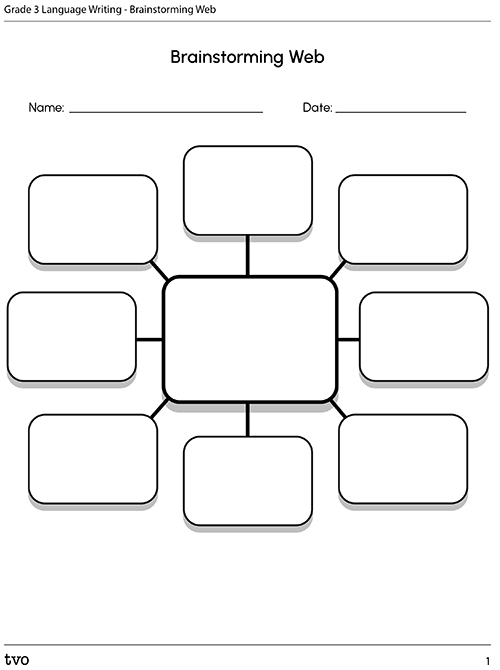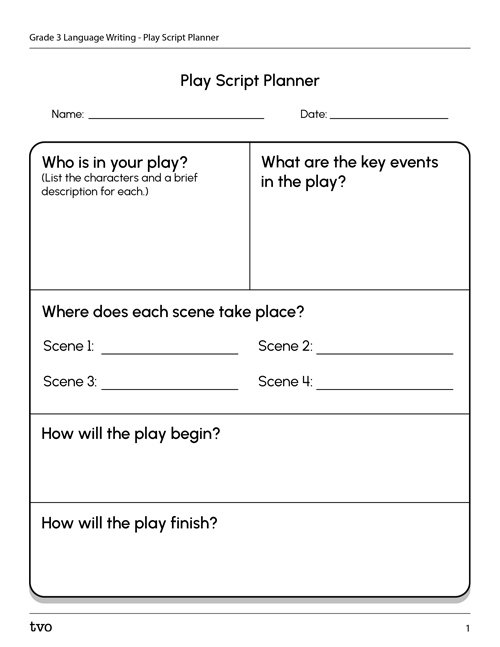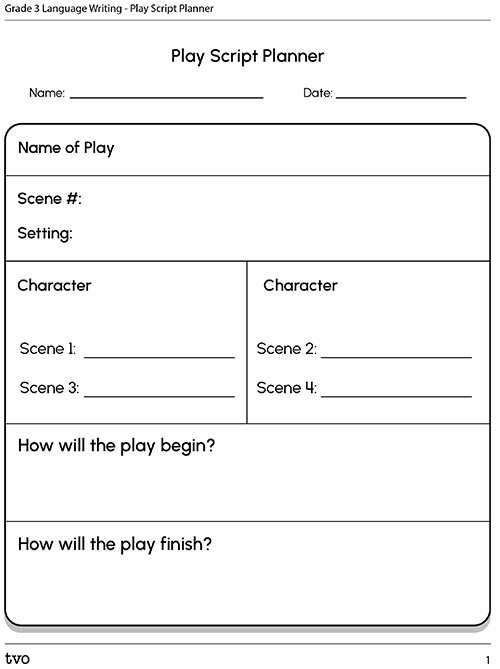Minds On
What is a play?
Have you ever put on a costume and pretended to be another person or thing? Or perhaps you just closed your eyes and imagined you were on an exciting adventure. Each time you were imagining these things, you were creating a play in your mind. A play is a piece of dramatic writing that is meant to be performed in front of an audience. When you read a play, you can imagine what the actors would be doing on the stage. People who write plays are called playwrights.
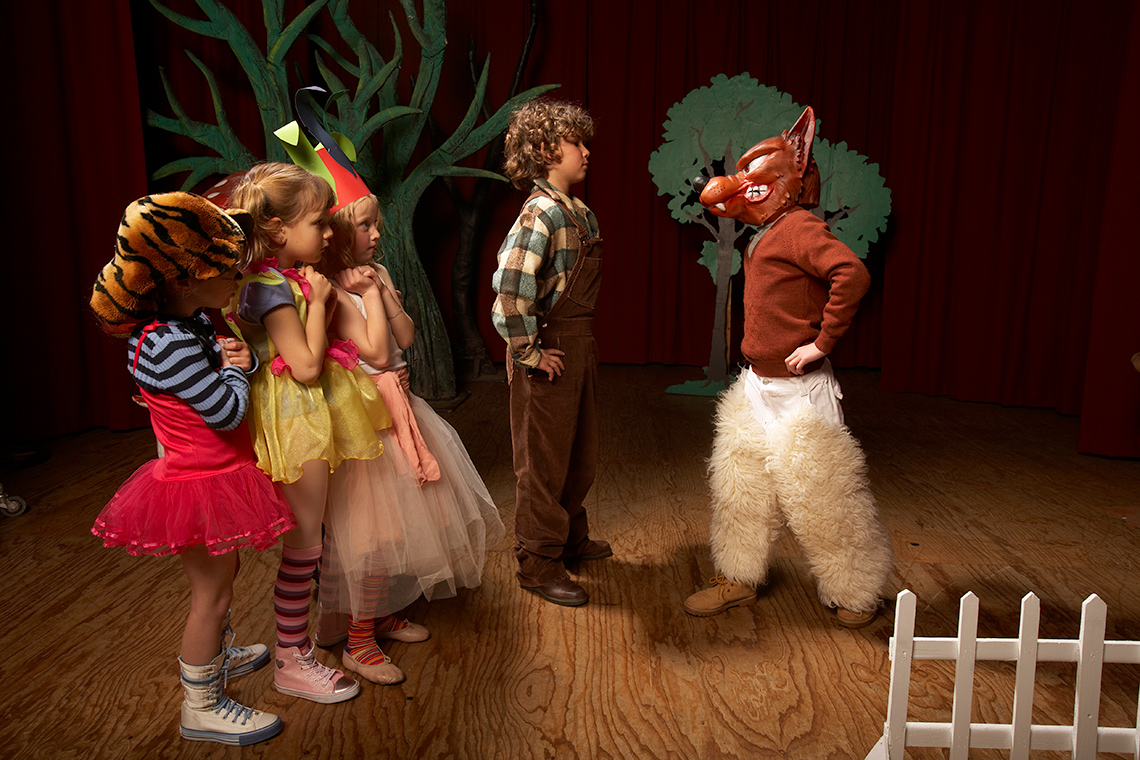
Characteristics of a play
Plays are a unique form of writing that use scripts to give directions to people who are putting on the play. Access the following chart to examine the important characteristics that need to be included in a good script.

Brainstorm
Reflect
Observe the following script for “Emile is Invisible,” by Vincent Cuvellier and Ronan Badel. You will notice that:
- the title is on top of the page
- the characters' words or "dialogues" are written on separate lines
- the angled words (also called "italicized") describe location or what is happening
- it is through this dialogue, that the audience is able to understand the events of the story.
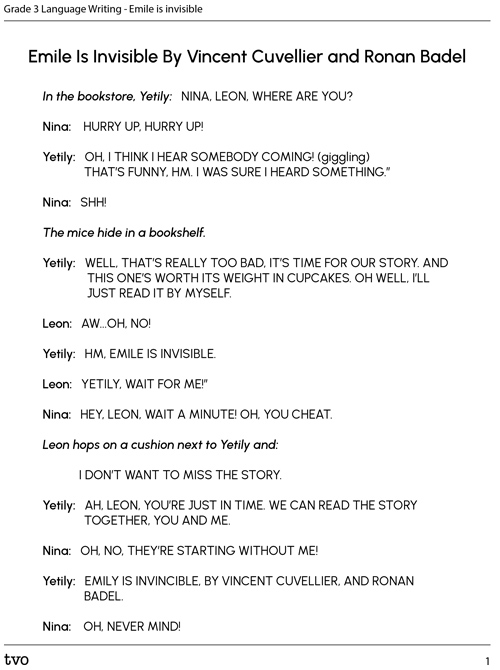
Press the Activity button to access the script for "Emile is Invisible.
Activity (Open PDF in a new tab)Action
Brainstorming and planning for your play
Brainstorming
Now that we know the main characteristics of a play, let’s brainstorm some possible ideas for a play you would love to write. You might choose to write a play about something that has actually happened in your life (and include yourself in the starring role) or you may decide to choose to write a play about something completely fictional with characters that you made up in your mind. It is up to you. Brainstorming is a great opportunity to exercise your creative muscles.
Complete the Brainstorming Web in your notebook or use the following fillable and printable document to organize your ideas.

Planning
Once you have selected the idea for the play you would like to write, you are ready to move onto planning all the exciting details that will bring your play to the stage.
Complete the Play Script Planner in your notebook or use the following fillable and printable document to organize your ideas.
Consolidation
Drafting, revising, and publishing your play
Drafting
Now that you have made a plan, you are ready to begin drafting your play. As you write, you may come up with other ideas to make your play even better. The drafting stage is a great time to add in all those extra details!
When you are writing, make sure to pay close attention to your ending punctuation marks. These marks will be especially important in a play to let your actors know how they should be saying their lines.
Access the following video to recall the usage of punctuation marks.
Complete the Play Script Planner in your notebook or use the following fillable and printable document to organize your final ideas for the play.
Revising
Writers read their writing over and over to observe if they can make their writing even more interesting for their audience. If you are all done your draft, find places to make your play even better. Once you have completed your self-edit, if possible find a fellow playwright and have them help you by reading the lines of the play with you. This activity will help you to know if you have written your lines in a way that is clear to the actor.
Complete the Self-Editing and Peer-Editing Checklist in your notebook or use the following fillable and printable document to help your revision process.

Press the Activity button to access the Self-Editing and Peer-Editing Checklist.
Activity (Open PDF in a new tab)As you edit, you may find that there are words that you and your fellow playwright are not able to spell. Here are a few spelling tips:
(e.g., cat – mat – that).

Publishing
Once you are all done editing your draft, you are ready to do a good copy that includes all of your revisions. Use your best handwriting or think about digital options.
Now that you have written your script, you are ready to hold auditions for your play and bring the magic to the stage!

Reflection
How do you feel about what you have learned in this activity? Which of the next four sentences best matches how you are feeling about your learning? Press the button that is beside this sentence.
I feel...
Now, record your ideas about your feelings using a voice recorder, speech-to-text, or writing tool.
